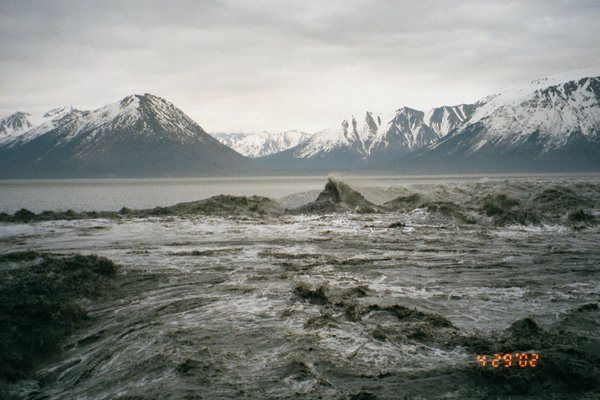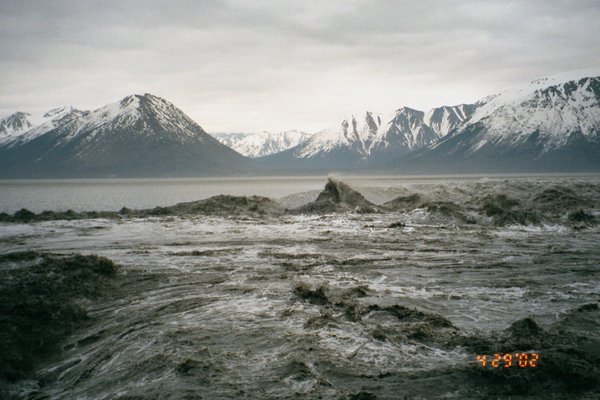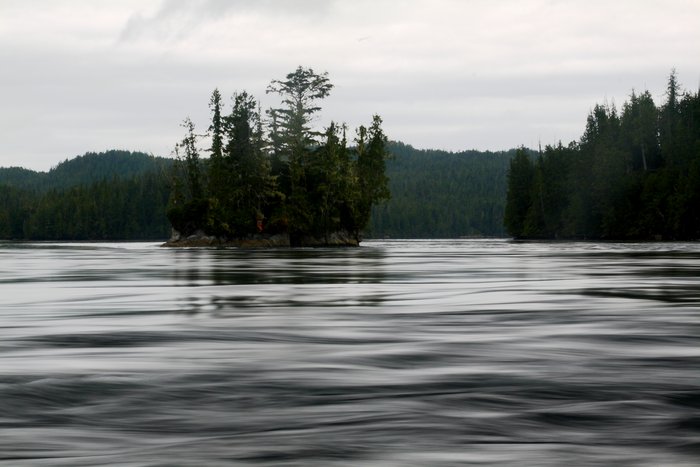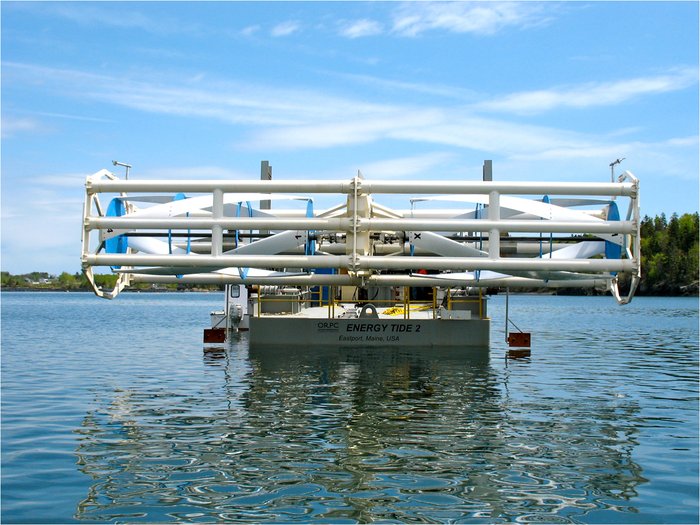
- Summary
- Background
- Technology
- East Foreland site (Nikiski)
- Fire Island site
- Point Possession site (“Turnagain Arm Tidal Electrical Energy Project”)
- Issues
Summary
With their large dynamic range, the tides in Cook Inlet have the potential to be an important renewable power source for the region. Studies are currently underway to quantify this resource and identify the best locations. Several pilot projects are in the early stages of planning or development. These include a 5 MW hydrokinetic tidal energy pilot project near Nikiski and a 240 MW tidal dam project near Possession Point.

Background
With 44,000 miles of coastline and some of the largest tidal ranges in the world, Alaska has enormous potential for generating electricity from both tides and waves. In fact, a recent study estimated that Alaska had 90% of the tidal power potential in the entire U.S. Cook Inlet in particular is host to the one of the largest tidal ranges in North America as well as a large percentage of the industry and population of Alaska.
There are around 10 areas within Cook Inlet that have a combined technical tidal potential of a few hundred megawatts (MW). This would be around half the average load for the entire Railbelt. The Railbelt electrical grid includes the service areas of six regulated public utilities that extend from Fairbanks to Anchorage and the Kenai Peninsula. In order to examine this potential tidal resource in more detail, the Alaska Energy Authority (AEA) and the National Oceanic and Atmospheric Administration (NOAA) launched a collaboration in 2011. Their baseline assessment (due in spring 2013) will attempt to quantify the resource in more detail and identify the most promising locations. The information and modeling from this study will also be useful for work on ocean acidification, coastal climate change, and preventing toxic algal blooms.
In addition to this government effort, there are three private tidal energy projects being studied in Cook Inlet as described below.

Technology
There are three basic ways to extract energy from the ocean:
• Ocean thermal energy conversion (requires warm water)
• Wave energy (not ideal in Alaska since most population centers are not located near consistent high-energy waves, however a pilot project is being considered near Yakutat (3.5 MB)
• Tidal energy (potentially feasible in Alaska)
Producing electricity from tides can be accomplished in two very different ways. One way is to build dams that trap water on rising or falling tides and then release it to produce power in a manner analogous to a traditional hydroelectric plant. The second way, called “hydrokinetic”, is to use submerged turbines that spin in response to tidally generated currents without the use of dams or impoundments, much like wind turbines harness wind energy.

— Get Photo
East Foreland site (Nikiski)
This tidal energy project is a collaboration between Ocean Renewable Power Company (ORPC) and Homer Electric. The primary goal of this pilot project is to demonstrate the feasibility of the technology in Alaskan waters but it could also produce up to 5 MW of power. In March 2011, the company received a preliminary permit from the Federal Energy Regulatory Commission (FERC) which regulates all U.S. hydroelectric projects. This permit allows a developer three years of first priority to file a license application for a project in the permit area.
An initial demonstration phase will consist of a 600kW facility funded in part by a $2 million grant from AEA through the Renewable Energy Fund. The costs for feasibility and permitting are expected to be $1-2 million with the initial 600kW demonstration phase costing around $10 million through construction and the first several years of operation.
Fire Island site
ORPC initially began project development in northern Cook Inlet at Fire Island, performing environmental and design work. They submitted a draft license application for this project with FERC, but instead chose to move forward with the East Foreland site in Cook Inlet. ORPC still retains a FERC preliminary permit for the Fire Island Project, and hopes to install a project there if the East Foreland Project proves successful. The Fire Island Project would be located on the west side of Fire Island and would link directly into the intertie (electric transmission line) being built for the Fire Island wind project. Ultimately the company envisions a tidal energy system in Cook Inlet comprised of several projects distributed throughout the inlet to capture the energy generated by the staggered tidal currents.
Point Possession site (“Turnagain Arm Tidal Electrical Energy Project”)
In May 2011 a company called Turnagain Arm Tidal Energy Corporation (formerly Little Susitna Construction Company, Inc.) filed a preliminary FERC application for a 240 MW project in Cook Inlet near Possession Point. This project would consist of a 1000-foot wide dam (“barrage”), containing 24 underwater turbines. This would be backed by a 1-mile by 2-mile reservoir for water storage during slack tides and would produce power on both flood and ebb tides.
The initial FERC application was revised in December 2011 and is currently under consideration. If accepted, baseline studies could begin in 2012 and a final Environmental Impact Statement (EIS) would be issued in 2016. After the EIS is issued, the project permitting process could be initiated.
Issues
In terms of air and water pollution, tidal power represents a vast improvement over fossil fuel combustion. The major issues associated with tidal power are the potential disruptions to marine organisms (both physical and acoustic changes) and the changes in tidal flow that result from the extraction of energy. Very little research has been conducted on these questions in Alaska and the size of these potential impacts is unknown. Of particular concern in Cook Inlet is the local population of endangered beluga whales. The Department of Energy (DOE) awarded a grant to ORPC of $600,000 to collect baseline data on whale movement in the area related to the East Foreland and Fire Island projects.
The proposed tidal barrage at Possession Point raises more environmental concerns than a submerged turbine system. These concerns include possible effects on fish and wildlife migrations/breeding habitat, changes to sediment distribution, and impacts on fish mortality.
Further Reading
- > 2011 Renewable Energy Atlas of Alaska
- > Alaska Hydrokinetic Energy Research Center (AHERC)
- > Preliminary Permit Application for the East Foreland Tidal Energy Project
- > "Scoping Document 2 for Turnagain Arm Tidal Electrical Energy Project" (2011, FERC)
- > Wikipedia article on tidal power
- > Ocean Renewable Power Company page on Alaskan projects
- > System Level Design, Performance, Cost and Economic Assessment - Knik Arm Alaska Tidal In-Stream Power Plant (2006). Produced by the Electric Power Research Institute (EPRI).
Created: Jan. 19, 2018